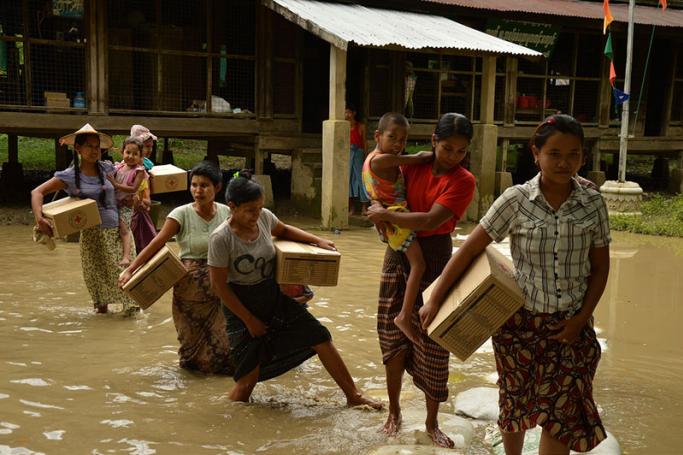There were 574 disasters reported around the globe and around 108 million people have been affected. The vast majority (92%) of natural disasters are due to global warming. Out of 65.3 million displaced people around the world over 14% are being hosted in Asia and the Pacific, according to the infographic created in time for the 3rd annual Aid & Development Asia Summit. To download the infographic, click here.
“Southeast Asia is a highly exposed area and particularly vulnerable to severe climate change” - Dr Ancha Srinivasan, Asian Development Bank.
One of the prevailing effects of climate change is water deprivation and drought, caused by the warming of the earth. In Vietnam over two million people,including 520,000 children and one million women, seek humanitarian assistance due to El-Nino induced drought (UNICEF, 2016). Three quarters of those in need are women and children. The Emergency Response Plan has prioritised health, WASH, food and nutrition for slightly more than one half of the total funding required. In the Philippines El-Nino caused $19.2 million in agricultural damage. In Cambodia, 18 out of 25 provinces face food insecurity which affects 2.5 million people.
Myanmar ranks second on the Global Climate Risk Index. An estimated $190 million funding is required to support over 525,000 people in need of humanitarian assistance across the country. Out of the218,000 displaced in Myanmar, 70% are women and children. The two key reasons for displacement are internal conflict between states and, floods and landslides, both of which have a devastating impact on people’s lives. The displaced are in urgent need of water, food, medical attention and shelter.Moreover, 90% do not have access to basic health services and three quarters are food insecure.
According to a UN OCHA report “Myanmar is one of the countries at highest risk of natural disasters in South-East Asia and there is an urgent need to strengthen disaster risk reduction activities and to enhance national capacity to prepare for and respond to future emergencies.”
Find out more about innovations, partnerships and policy updates for disaster and flood risk reduction at the upcoming Aid & Development Asia Summit, taking place on 14-15 June at the MICC2 in Nay Pyi Taw, Myanmar. The agenda will include a panel discussion on building a culture of resilience and strengthening disaster preparedness and roundtables on emergency communication, early warning systems, GIS, data collection and mapping. View detailed agenda here http://asia.aidforum.org/agenda
Join the Aid & Development Asia Summit 2017to hear from leading speakers including:
Shashank Mishra, Disaster Risk Reduction Program Director, United Nations Human Settlements Programme (Un-Habitat)
Marcel de Brune, Project Director, International Rescue Committee
Ernesto Castro-Garcia, Director, Regional Programs, Asia-Pacific Region, Habitat for Humanity
Nada El Marji, Director, Aid and Development, Inmarsat
Dr Aung Kyaw Htut, Deputy Secretary General, Myanmar Red Cross Society
Moderator: Wilson John Barbon, Country Program Director, Myanmar, International Institute of Rural Reconstruction (IIRR)
Kieran Gorman-Best, Head of Mission, Myanmar, International Organization for Migration
BijayKamacharya, Country Director, Myanmar, UN-Habitat
Dr Mel Capistrano, Senior Programme Manager, Asian Disaster Preparedness Centre (ADPC)
Claude Zukowski, Senior Manager & Disaster Relief and Donation Coordinator, Procter & Gamble
Brushan Shrestha, Monitoring and Evaluation Manager, Plan International
And many others! To register your participation, click here http://asia.aidforum.org/register
For all enquiries, please get in touch with Alina O’Keeffe at [email protected]
SOCIAL MEDIA CALENDAR












